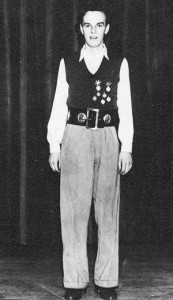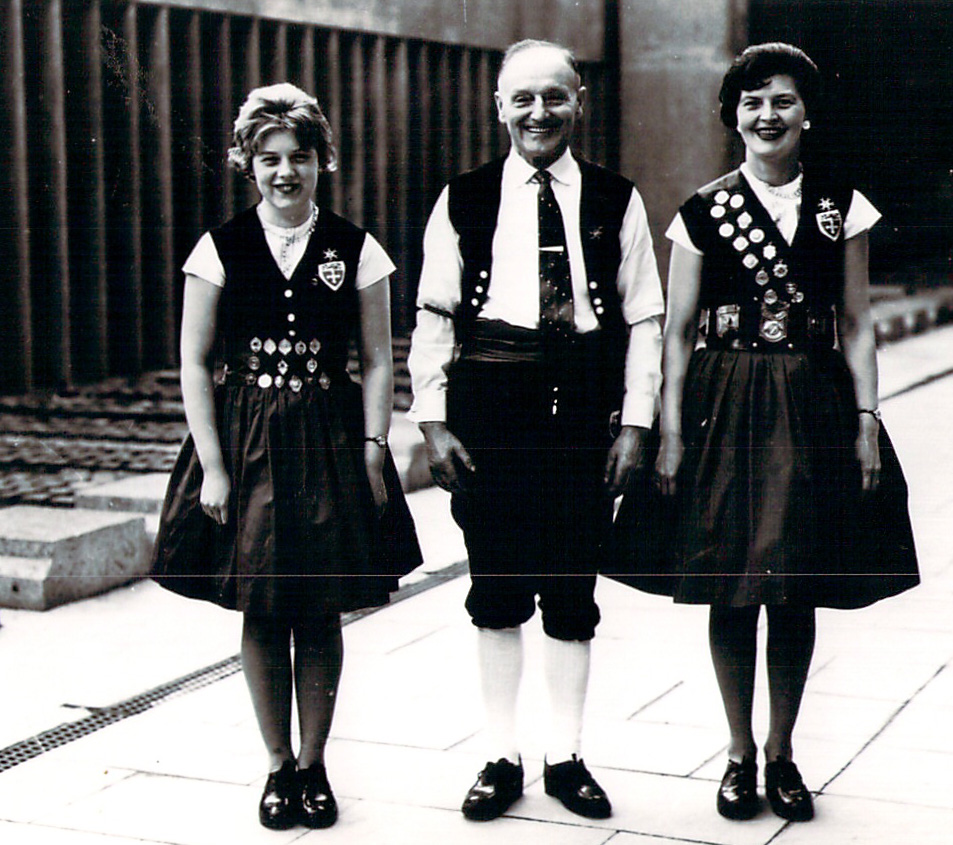It has been common for revival dancers to pigeonhole their clog dances into regional styles such as “Lakeland Clog” or “North-East Clog.” As long ago as 1985 evidence was beginning to emerge that this was perhaps an inappropriate concept (see for example Metherell, C. “Clog Dancing: An analysis of Regional Differences”, Traditional Dance, 3: 1-16, (1985).) With the advent of readily searchable newspaper and other archives it has become apparent that it is better to consider these dance forms within two distinct lineages rather than multiple “regional” styles albeit with individual performance traits.”
Stage Style
The first, which we name the “Stage Style Clog Dance” ” may perhaps have originated in Lancashire at some time before the early 1800s. However it became extremely popular in every part of England and southern Scotland from the 1830’s onwards. the dance is characterised by the wearing of clogs, the presence of shuffling movements in most steps, some outturn of the feet, often involving foot crossing and a standardised pattern of six bars of stepping followed by a two bar finish. It is this style of stepping which has dominated clog dancing for the last 175 years and was the style danced in competitions which were a particular feature of clog dancing from about the 1870s onwards. It seems for the most part to have involved specific instruction by way of dancing master classes or individual tuition, although clearly imitation must have played apart.
Vernacular Style
The second style, which we have called “Vernacular Clog Dance” was performed in clogs The dance generally involved few if any shuffling units, these being replced by toe and heel movements The feet showed little outturn and the dance generally a lack of standardised patterning, it being fitted to the music at the dancer’s whim. Whereas the Stage Style is relatively homogeneous, the Vernacular Style is much more variable between individuals. It is generally an unlearned style in the sense that the steps are acquired through observation and “immersion” rather than instruction as in the Stage Style.

Stage Style Dancers
Find out about some the dancers and performers who have shaped the way in which clog dancing developed, both during its heyday, when many dancers performed on the music hall stage and during the 20th century when the folk revival was looking for dancers to learn from and emulate. If you know the name of the dancer you're looking for, try using the search tab instead.

Clog Dancing History
Will Percival, pictured on the right, was a late nineteenth century music hall performer. However the earliest reference to clog dancing of some sorth go back to the late eighteenth when wooden shoe dancers first appeared on the London stage. Find out about the evolution of the dance and how its performance changed over the centuries, adapting to fit the changing social and theatrical conditions.. Fromthe brief entre'acte performances of the 1780s through the show-stopping dancing of Dan Leno a hundred years later, to the adoption of clog dance by the folk revival a hundred years later still.

Competitions
Competitions appear to have been part of stage style clog dancing since its very earliest days. Competitive dancng took two main forms. A dancer might simply declare himself a champion and challenge allcomers to take him on, usually for a substantial stake. By the second half of the 19th century these had developed into full blown competitions with often substantial numbers of entrants. teh first "World Clog Dance Championship" was held in 1880 and although these ceased shortly before the First World War, competitions were still occasionally held up to 1939. They later became an established part of the folk revival.

Vernacular Clog Dance
If the shuffling stage style clog dancing became the standard fare of the music hall and the competition, the heel and toe style remained truly the clog dance of the people. Usually performed in quasi-domestic settings from parties to public houses, the dancers wore either clogs or shoes depending upon the footware normally used by the working class in their geographical location. Thus we have combined information about both vernacular clog and step dance wherever it occurred. Find out about the toe and heel style clog dance steps from Lancashire, step dancing in Suffolk or Devon.